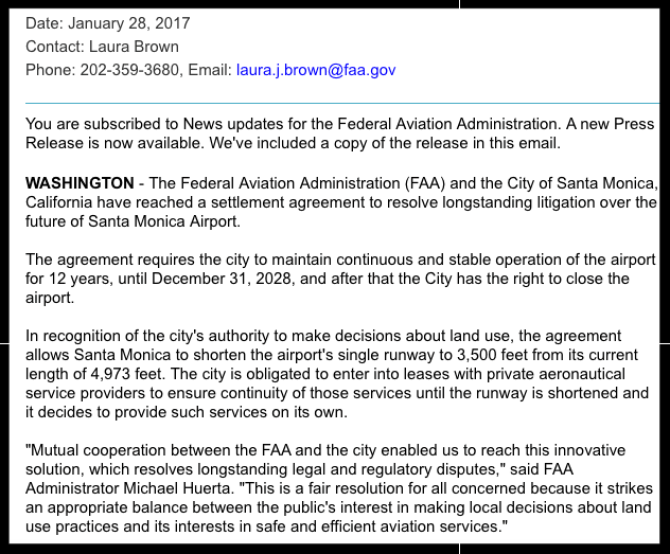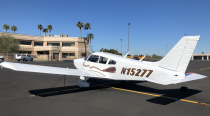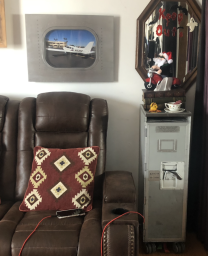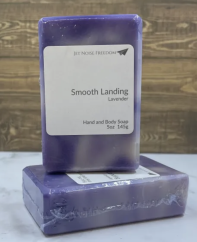Santa Monica history of issue
July 28, 2016 - Santa
Monica Eyes June 2018 Closure Date for SMO
April 28, 2016 - Settlement
Reached with One Plaintiff in SMO Fight
March 22, 2016 - District Court Hears Santa Monica
Airport Appeal
November 6, 2014 - Measure Granting Voters
Approval of SMO Redevelopment Fails
August 1, 2014 - Santa Monica Airport Proponents File FAA
Part 16 Complaint
July 5, 2014 - Airport Particle Emissions More
Widespread Than Previously Believed
June 24, 2014 - SMO Airport Officials Accused of Conflict of Interest
June 1, 2014 - Emissions Limits Are Santa Monica’s Latest Effort to Curtail SMO Flying
May 6, 2014 - Airport Commission Revisits Emissions Limits at SMO
May 1, 2014 - Santa Monica
City Council Votes On Plan To Restrict Aviation At SMO
February 18, 2014 - FAA Wins Latest Battle over Santa
Monica Airport
February 14, 2014 - Santa Monica Loses Airport Lawsuit In Victory
For GA Proponents
February 11, 2014 - Amicus Brief Seeks Dismissal of
Santa Monica Complaint
February 4, 2014 - Santa Monica Airport Case Headed to
Judge for Hearing
January 14, 2014 - U.S. Government Wants Santa
Monica Airport Suit Tossed
January 11, 2014 - U.S. Government Files Motion to
Dismiss Santa Monica Airport Lawsuit
December 1, 2013 - Precedent May Be Set by Santa
Monica Case
November 5, 2013 - Santa Monica Lawsuit May Determine
Airport’s Fate
October 10, 2013 - Airport2Park Seeks To Close Santa
Monica Airport
June 1, 2013 - SMO Facing Further Efforts at
Airport Closure
May 1, 2013 - AIN Blog: Goodbye SMO
August 9, 2012- Santa Monica Airport
Commission Seeks Daily Ops Limit
June 29, 2011 - Santa Monica Drops Efforts
To Ban Large Aircraft
June 7, 2011 - Santa Monica Drops Efforts To Ban
Large Aircraft at SMO
January 25, 2011 - Court Backs FAA Rejection of SMO Big-jet
Ban
August 3, 2010 - AOPA Opposes Santa Monica
Airport Jet Ban
January 28, 2010 - Touching Bases: Santa Monica
Friends to Testify
January 26, 2010 - SMO foes find new tool in
anti-airport battle
November 24, 2009 - AOPA seeks status in SMO noise
dispute
July 28, 2009 - Santa Monica ban cannot stand,
FAA rules
June 2, 2009 - Santa Monica Large Aircraft Ban
Blocked
May 19, 2009 - Santa Monica Ban Blocked; Van Nuys
Phasing Out?
May 1, 2009 - Santa Monica Airport Part 16
Hearings Held
March 26, 2009 - Santa Monica Airport Part 16 Hearings
Held
October 9, 2008 - SMO brief appeals reversal of
ban
September 2, 2008 - City Brief Says FAA Wrong about SMO
Limits
August 29, 2008 - California Urges FAA To Bar SMO
Jets
August 12, 2008 - California Legislature
Reignites SMO Ban Controversy
July 7, 2008 - FAA: SMO cannot ban
large-airplane operations
May 27, 2008 - SMO Ban Repealed, Pending Further FAA
Action
May 8, 2008 - Touching Bases:
FAA investigating SMO's conformance program
May 6, 2008 - Santa Monica access restrictions
proposed
April 28, 2008 - Santa Monica nixes large jet
ban
April 24, 2008 - FAA: Santa Monica Airport Ban
‘Unlawful’
December 11, 2007 - NBAA Commends FAA Decision on
SMO
November 29, 2007 - Santa Monica Proposes
Category C/D Jet Ban at SMO
September 26, 2007 - FAA, Santa Monica go
head-to-head
August 1, 2007 - Santa Monica Airport dodges
monitoring mandate
July 5, 2007- NATA warns of more SMO
problems
June 5, 2007 - Santa Monica neighbors want
shorter runway
April 17, 2007 - NBAA Sees Santa Monica Landing Fees as
Good News
September 13, 2006 - Engine emissions draw ire
from airport neighbors
British Airways v. Port of New York Authority
Country Aviation, Inc. v. Tinicum
Township
Banner Advertising, Inc. v. City of
Boulder
Gustafson v. City of Lake Angelus
FAA Airports District Office
(ADO)
National Environmental Policy Act of
1969 (NEPA)
Resource Conservation and
Recovery Act (RCRA)
Carbon Offsetting and Reduction
Scheme for International Aviation (CORSIA)
Online tutorial
Airport
Noise and Capacity Act of 1990 (ANCA)
14
CFR Part 77
requires that before constructing anything that could be an obstacle to aircraft, the sponsor must notify the FAA
upon receipt of such a notice, the FAA performs an obstruction analysis to determine the effects of the project on flight operations at
the airport
the FAA then issues 1 of 3 determinations:
- that it has no objection to the proposal
- that it has no objection to the proposal if certain conditions are met
- that the proposal is objectionable because it would adversely affect air navigation
the FAA neither permits nor prohibits the proposed construction leaving that decision to local government having jurisdiction over zoning
and the issuance of building permits in the area
14 CFR Part
91.129(e)(3)
requires that when operating in Class D airspace an airplane approaching to land on a runway served by a visual approach slope indicator
(VASI) or precision approach path indicator (PAPI) shall maintain an attitude at or above the glideslope until a lower altitude is necessary for safe landing
Santa Monica - SMO has installed a PAPI-cam where PAPI is set to a 4 degree glideslope – incorporates a video camera and theodolite that
record and measure the descent profile of every VFR approach to runway 21
Pilot receives a warning letter from the airport manager – second violation is referred to the FAA for enforcement action or
counseling
Teterboro – TEB – 3 strikes and you’re out! – airport manager sends the operator a violation letter – if operator receives 3 violations
in a 2-year period the aircraft is banned from the airport forever
CDA – continuous descent approaches now being widely used for fuel saving and airport area noise reduction – aircraft meeting Required
Navigation Performance standards are able to begin a smooth and stable descent at reduced power from cruise altitude up to 120 miles from the airport and all the way to landing, eliminating the
throttle jockeying necessitated by step down approach procedures
If you are an AOPA member you have free access to the Air Safety Institute courses for WINGS credit. I highly suggest you watch the one
entitled, "ASN Volunteer
Orientation" to learn about the demise of general aviation airports around the nation primarily due to what has been discussed in
this chapter.
June 15,
2016 - The FAA’s final policy on the non-aeronautical use of airport hangars appears in today’s Federal Register and will take effect on July 1, 2017. The FAA is
issuing the policy to clarify how aviation facilities – including hangars can be used on airports that receive federal funds. The final policy strikes a balance between hangar use for aviation and
non-aviation purposes. The policy ensures hangars are available when there is an aviation need, and if demand is low, allows hangars to be used for non-aviation activities. The FAA recognizes that
non-aviation hangar space rental allows airport sponsors to be economically independent when hangars are not being used to fulfill aviation needs. Airport sponsors must receive approval from the FAA
before hangars can be used for non-aviation purposes. In addition, the policy outlines the type of aircraft that can be built in a hangar, the equipment and items that can be stored in hangars, and
the role of the airport sponsors to ensure tenants pay fair market value for hangar space.
Click here for 81 FR 38906 to read the Policy on the Non-aeronautical Use of Airport
Hangars
NOTE: Airport/FBO
"landlords" had felt compelled by the FAA to impose hangar-storage restrictions based on the so-called Glendale case. Several years ago, after FAA inspections found hangars that contained
automobiles, boats, large recreational vehicles, and the like, the FAA found the city of Glendale, Arizona, in violation of an FAA grant agreement by allowing use of airport hangars for storing such
nonaviation items. This final policy still contains the overarching principle that airports that have accepted federal grants (and certain surplus property airports) may use airport property only for
aeronautical purposes, unless otherwise approved by the FAA. Airport sponsors should continue to manage the use of hangars through an airport leasing program that requires a written lease agreement
or permit, and should continue to take steps to prevent unapproved uses. Overall, the policy is prompted by the realization that so-called 'non-aeronautical' storage or uses in hangars could
interfere with or displace aeronautical use of a hangar. At the same time, the FAA recognizes that storage for some items in a hangar may not have a significant effect on the aeronautical utility of
the hangar. The final policy attempts to balance the two. The policy expressly permits "maintenance, repair, or refurbishment of aircraft," although it continues to bar the indefinite storage of
nonoperational aircraft. It permits "storage of aircraft handling equipment, e.g., towbars, glider tow equipment, workbenches, and tools and materials used in the servicing, maintenance, and repair
or outfitting of aircraft." In general, "provided the hangar is used primarily for aeronautical purposes [housing an aircraft], an airport sponsor may permit nonaeronautical items to be stored in
hangars provided the items do not interfere with the aeronautical use of the hangar." A vehicle parked in the hangar while the vehicle owner is using the aircraft is permitted. The policy allows
typical pilot resting facilities and aircrew quarters, although a hangar may not be used as a residence. And of importance to the homebuilt community, the policy now more expansively permits
noncommercial construction of amateur-built or kit-built aircraft in a hangar, including the final assembly of aircraft under construction. With respect to the many privately constructed and owned
hangars on an airport ground lease, the form of property interest - be it a leasehold or ownership of a hangar - does not change the applicability of the policy. However, the policy does not apply to
privately owned facilities located off the airport. This final policy technically does not apply to airports that have never received federal Airport Improvement Program grants or are not restricted
by surplus property conveyances, but the policy likely will continue to be utilized by virtually all airports offering hangar facilities.
Thank you Zac for sharing his personal crop dusting videos below
Thank you Jordan for sharing the YouTube video below - I can't help but wonder how the deer must be traumatized!!
D.C. Circuit Rules in Favor of Petitioners Challenging Flight Procedures for Phoenix Sky Harbor International Airport
On August 29, 2017, the U.S. Court of Appeals for the District of Columbia Circuit issued an
opinion and order vacating FAA’s September 18, 2014, order implementing new flight routes and
procedures at Phoenix Sky Harbor International Airport. City of Phoenix v. Huerta, No. 15-1158, 2017 WL 3708094 (D.C. Cir.).
Two petitions for review were filed in the D.C. Circuit challenging FAA’s 2014 implementation of area navigation (RNAV) departure procedures in the Phoenix
airspace. The City of Phoenix, the owner of Phoenix Sky Harbor International Airport, filed the first petition on June 1, 2015, and a group of Phoenix historic neighborhood associations filed a
second, similar petition on July 31. On FAA’s motion, the court consolidated the two
cases.
FAA implemented the Phoenix RNAV procedures pursuant to the expedited environmental review
mandated by the 2012 FAA Modernization and Reform Act, section 213(c)(1). Before implementing the procedures, FAA conducted an environmental analysis as required by NEPA and determined that no
extraordinary circumstances existed that would preclude expedited review. However, residents of some Phoenix residential areas filed noise
complaints. Although the FAA had consulted with the City of Phoenix Aviation Department during development of the procedures, the City raised new objections and demanded that the FAA return to the
old routes.
In its decision, the court rejected the FAA’s argument that the petition for review was untimely, finding that while the petitioners had missed the 60-day deadline for seeking review, the petitioners had
reasonable grounds for their delay. On the merits, the Court found that the FAA violated the National Historic Preservation Act by failing to notify all consulting parties of its determination that
no historic structures would be adversely affected by noise. In addition, the Court found that the FAA violated NEPA because FAA did not have sufficient support for its finding that the procedures
were eligible for legislatively- created expedited the NEPA review. The court based this finding on its determination that FAA did not involve or notify local citizens and community leaders about the
proposed flight path changes and therefore did not have sufficient evidence to determine whether extraordinary circumstances existed that would preclude the use of the expedited
review.
Finally, the court found that the FAA did not fulfill its duty under Section 4(f) of the
Transportation Act to consult with the City in assessing whether the new routes would substantially impair the City’s parks and historic sites, and also found that the FAA did not gather enough information to conclude that the routes would not substantially impair these protected areas.
The Court vacated the FAA’s September 18, 2014, order implementing the procedures and remanded the
matter to FAA for further proceedings. Judge Sentelle dissented from the opinion, arguing that petitioners had not demonstrated “reasonable grounds” under prior D.C. Circuit precedent to excuse their late filing. FAA is
considering its options to seek a panel rehearing or a rehearing en banc.
Parties Reach Agreement Regarding Flight Procedures for Phoenix
Sky Harbor International Airport
The City of Phoenix, the owner of Phoenix Sky Harbor International
Airport, and a group of Phoenix historic neighborhood associations filed petitions challenging FAA’s 2014 implementation of area
navigation (RNAV) departure procedures in the Phoenix airspace. City of
Phoenix v. Huerta, No. 15-1158 (D.C. Cir.). FAA implemented the Phoenix RNAV procedures pursuant to the expedited environmental review mandated by the 2012 FAA Modernization
and Reform Act, section 213(c)(1). Before implementing the procedures, FAA conducted an environmental analysis as required by NEPA and determined that no
extraordinary circumstances existed that would preclude expedited review. However, residents of some Phoenix residential areas filed noise complaints. Although FAA consulted
with the City of Phoenix Aviation Department during development of the procedures, the City raised new objections and demanded that FAA return to the old routes.
On August 29, 2017, the U.S. Court of Appeals for the D.C. Circuit
issued an opinion and order vacating FAA’s September 18, 2014 order implementing new flight routes and procedures at Phoenix
Sky Harbor International Airport. The Court held that (1) Petitioners
had reasonable grounds for their delay in filing and a decision on the merits is appropriate, (2) FAA did not fulfill its obligation under
the National Historic Preservation Act to consult with certain
stakeholders in the affected area, (3) FAA’s finding that new routes were not likely to be highly controversial on environmental grounds was
arbitrary and capricious, (4) FAA’s consultation with the city was
arbitrarily confined and insufficient under the Transportation Act, and (5) it was unreasonable for FAA to rely on guidelines in 49 CFR Part 150 that apply to historic sites
where a quiet setting is not a generally recognized purpose and attribute of the historic properties.
FAA and petitioners have reached an agreement that provides for noise
relief to Petitioners in two steps: first, near-term changes to west-flow departures; and, second, the development of performance based
navigation procedures with the intent of approximating, to the extent
practicable, the pre-September 2014 flight tracks. On November 30, 2017, the parties filed a joint motion with the D.C. Circuit to modify the order consistent with the agreement.
The Court amended its order on February 7, 2018, applying it only to departure procedures at Phoenix and delaying the issuance of the mandate until June 15,
2018.
FAA has begun the process of developing new departure procedures to
comply with the first step of the agreement.










